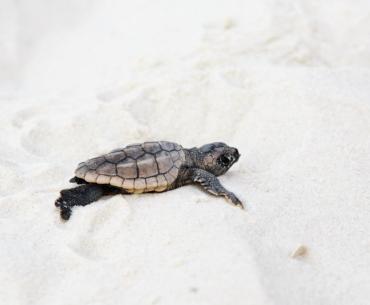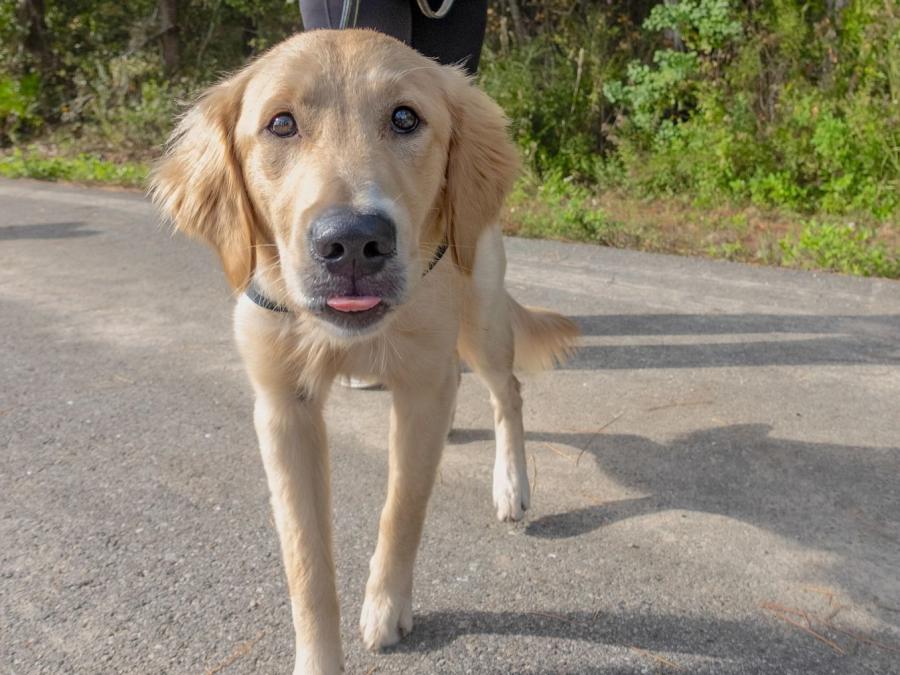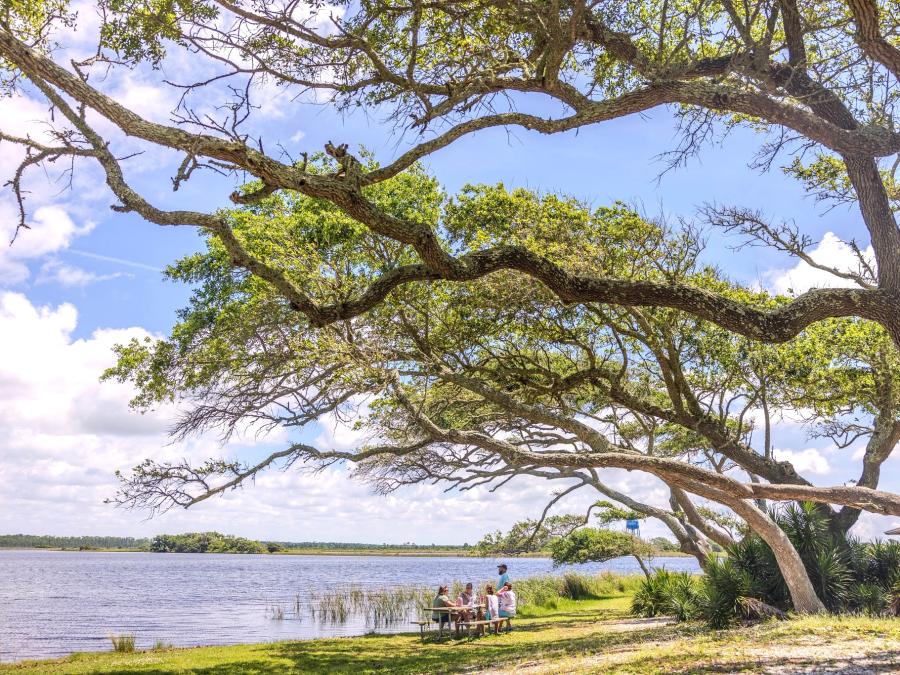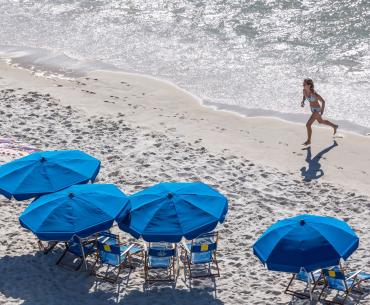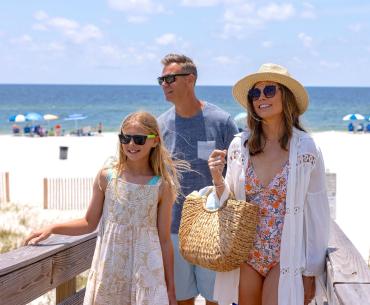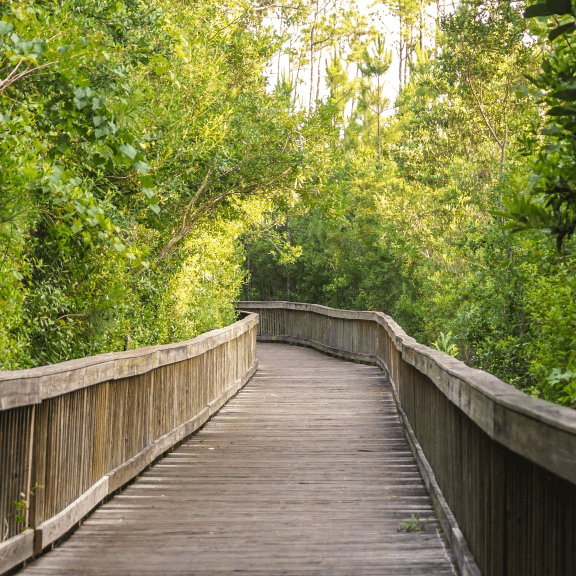
Backcountry Trail
in Gulf Shores & Orange Beach
Only minutes from Alabama's beautiful beaches is an outstanding system of trails that seems far removed from the rest of the world. Nestled in Gulf State Park, the Hugh S. Branyon Backcountry Trail allows visitors to leave the world behind and explore the 6,150 acres of the park. USA Today named this spectacular trail as the best recreational trail in the country in 2023, 2024, and 2025.
Its accessible trailheads, vibrant plant and wildlife, and exceptional views make the Hugh S. Branyon Backcountry Trail so special and beloved by residents and visitors.
Discover all the cool things along the 28 miles of paved paths along the Hugh S. Branyon Backcountry Trail.
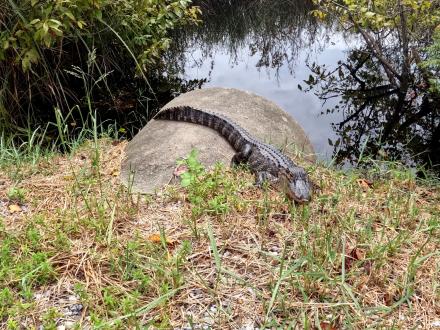
A Special Place
Along the 28 miles of multi-use paved trails, you'll discover nine distinct ecosystems, including longleaf sand ridges, coastal dunes, live oak maritime forests, pine flatwoods, freshwater marshes, and coastal hardwood swamps. Grab a bike and meander down lanes lined with towering pines, scrub oak, palmetto, and thick, green deer moss. You'll cruise past shimmering freshwater lakes, coastal swamps, and wetlands where cattails sway in the breeze.
Waiting for their next meal (usually an unsuspecting fly), beautiful, white-topped pitcher plants with long, conical stems can be seen near the marshes. Florida rosemary bushes grace almost every trail. While not used for cooking, the plant still has that familiar rosemary fragrance. Not sure what you're seeing? The trails have been outfitted with interpretive signs to help you identify plants and wildlife.
While on the trails, be on the lookout for local wildlife, as you may spot whitetail deer, bobcats, coyotes, and even alligators. Keep your eyes peeled above for osprey, bald eagles, heron, and dozens of other bird species.
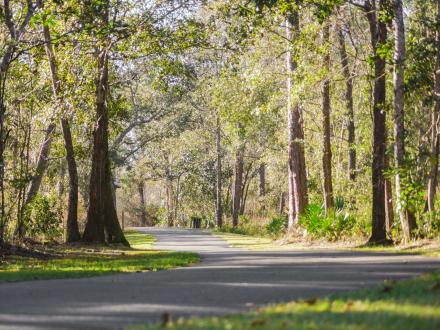
How it All Began
The area in which the Hugh S. Branyon Backcountry Trail lies was once inhabited by Native Americans thousands of years ago. Their early hunting paths later became logging roads for European settlers in the 1700s, and centuries later, some of those roads, including Catman Road, were "rediscovered" and converted into the paths of the Backcountry Trail. The first trail section was completed in 2003 and named for the former Gulf State Park Superintendent Hugh S. Branyon, who had a burning passion for the outdoors and served in his position from 1970 until his retirement in 2009.
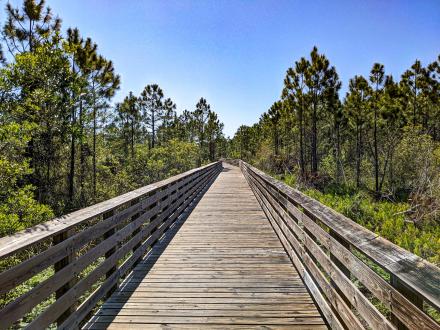
The Trail Today
From that simple beginning, the trail began to grow outward. Through the efforts of Orange Beach Coastal Resource Manager Philip West, the cities of Gulf Shores and Orange Beach, and Gulf State Park, the trail system has become a major Gulf Coast destination and now links both towns. In 2010, it was designated a National Recreational Trail and added to the Alabama Coastal Birding Trails list. The "trail" itself is not a single path but a series of multi-use trails, more than 28 miles of them — that interconnect with one another. Multi-use means just that—the paths are suitable for walkers and cyclists and are fully ADA accessible. No motorized vehicles are allowed.
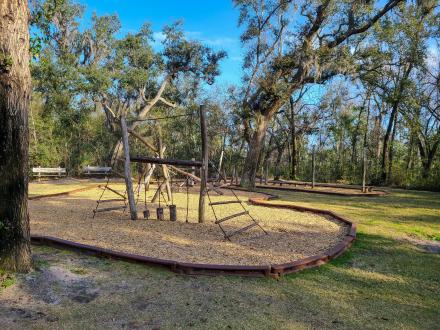
Experiencing the Backcountry Trail
The Backcountry Trail has several trailheads with ample parking and direct access to the trail. Several restrooms and water fountains are located on the trail or not far from it.
One of the trail's highlights can be found at the hub of the trail system, where four paths meet. Here you'll find the Butterfly Garden and Nature Pavilion, where butterfly-attracting plants shower the trail with color from spring to fall. You can watch those butterflies and birds from a porch swing, catch an informative show about local nature and the environment, or bring a picnic lunch to laze around on the thick, green lawn.
The kids will love rock climbing at the Bouldering Park next to the Pavilion, and not far from the Butterfly Garden is Al’s Parkour Challenge on the Twin Bridges Trail. They can test their skills as they jump, climb, and balance through this fun agility course.
If you venture further down the Rosemary Dune Trail, you’ll find a great lookout spot equipped with shaded seating and a slide.
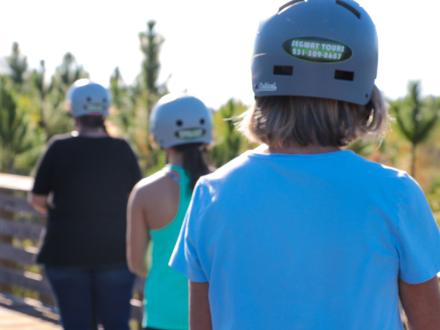
When exploring the trails in Gulf Shores, you can relax and enjoy a bite to eat in the shaded picnic area at Lake Shelby across from The Lodge. There are two playgrounds and a dog park for our furry friends to play in the water. Check out the trail’s map to discover all the cool spots and rest areas throughout the trails.
You can walk, bike, or skate the trail. Walking allows you to immerse yourself in the beauty surrounding you, including coastal hardwood swamps along the Gulf Oak Ridge Trail or the waters of Little Lake on the Catman Road Trail. Biking the trail allows you to cover more ground and see more of the trail in less time. Bring your own, rent one from one of the nearby outfitters like Infinity Bicycles or Beach Bike Rentals, or take advantage of the park’s free bike-sharing program.
Remember, the paved trail works like a highway—whether walking or biking, always keep to the right. If you want to know more about the area's plants, wildlife, and history, book a guided tour with Coastal Segway Adventures. The tours last about two hours and start with a short course on Segway operation.
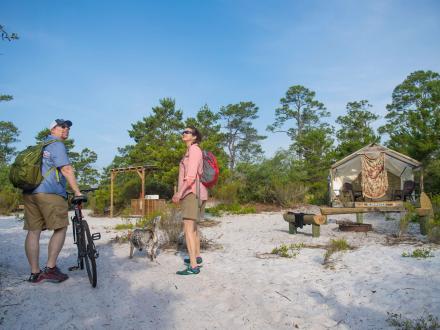
There aren't many trails where you can camp, but you can on this one. The Backcountry trail offers a fantastic camping area under the tall pines with white sand footing and scrub oak called The Outpost.
The Outpost has three primitive campsites you must walk or bike to. Each site includes a canvas tent erected on a slightly elevated rustic floor, nylon cots, fire pits, and firewood provided by the park. A nearby pump sink is available for washing up. Even though you must walk or bike in, you're close enough to the Gulf State Park Campground camp store if you need anything. Remember, there are only three campsites, and they book fast. Reserve yours in plenty of time for your trip.
Originally written by RootsRated for Gulf Shores, AL.
Experience the wonder of the Hugh S. Branyon Backcountry Trail and plan a trip to Gulf State Park today!

